[English] 日本語
 Yorodumi
Yorodumi- EMDB-47043: Insulin receptor in complex with both insulin and de novo designe... -
+ Open data
Open data
- Basic information
Basic information
| Entry |  | |||||||||
|---|---|---|---|---|---|---|---|---|---|---|
| Title | Insulin receptor in complex with both insulin and de novo designed site-2 binder "S2B". | |||||||||
 Map data Map data | Cryo-EM map of insulin receptor bound with both insulin and de novo designed site-2 binder called "S2B". | |||||||||
 Sample Sample |
| |||||||||
 Keywords Keywords | Insulin receptor / insulin / designed binder / SIGNALING PROTEIN | |||||||||
| Function / homology |  Function and homology information Function and homology informationSignaling by Insulin receptor / IRS activation / Insulin receptor signalling cascade / Signal attenuation / Insulin receptor recycling / PI5P, PP2A and IER3 Regulate PI3K/AKT Signaling / regulation of female gonad development / positive regulation of meiotic cell cycle / insulin-like growth factor II binding / positive regulation of developmental growth ...Signaling by Insulin receptor / IRS activation / Insulin receptor signalling cascade / Signal attenuation / Insulin receptor recycling / PI5P, PP2A and IER3 Regulate PI3K/AKT Signaling / regulation of female gonad development / positive regulation of meiotic cell cycle / insulin-like growth factor II binding / positive regulation of developmental growth / male sex determination / insulin receptor complex / insulin-like growth factor I binding / insulin receptor activity / exocrine pancreas development / nuclear lumen / insulin binding / adrenal gland development / PTB domain binding / negative regulation of glycogen catabolic process / positive regulation of nitric oxide mediated signal transduction / negative regulation of fatty acid metabolic process / negative regulation of feeding behavior / Signaling by Insulin receptor / IRS activation / regulation of protein secretion / Insulin processing / positive regulation of peptide hormone secretion / positive regulation of respiratory burst / negative regulation of acute inflammatory response / Regulation of gene expression in beta cells / alpha-beta T cell activation / positive regulation of receptor internalization / regulation of embryonic development / insulin receptor substrate binding / positive regulation of dendritic spine maintenance / Synthesis, secretion, and deacylation of Ghrelin / negative regulation of respiratory burst involved in inflammatory response / epidermis development / activation of protein kinase B activity / negative regulation of protein secretion / protein kinase activator activity / negative regulation of gluconeogenesis / positive regulation of insulin receptor signaling pathway / positive regulation of glycogen biosynthetic process / fatty acid homeostasis / Signal attenuation / FOXO-mediated transcription of oxidative stress, metabolic and neuronal genes / negative regulation of lipid catabolic process / positive regulation of lipid biosynthetic process / heart morphogenesis / negative regulation of oxidative stress-induced intrinsic apoptotic signaling pathway / regulation of protein localization to plasma membrane / phosphatidylinositol 3-kinase binding / nitric oxide-cGMP-mediated signaling / transport vesicle / COPI-mediated anterograde transport / positive regulation of nitric-oxide synthase activity / Insulin receptor recycling / negative regulation of reactive oxygen species biosynthetic process / positive regulation of brown fat cell differentiation / insulin-like growth factor receptor binding / NPAS4 regulates expression of target genes / neuron projection maintenance / endoplasmic reticulum-Golgi intermediate compartment membrane / positive regulation of mitotic nuclear division / Insulin receptor signalling cascade / positive regulation of glycolytic process / positive regulation of cytokine production / animal organ morphogenesis / endosome lumen / positive regulation of long-term synaptic potentiation / acute-phase response / positive regulation of protein secretion / positive regulation of D-glucose import / insulin receptor binding / positive regulation of cell differentiation / Regulation of insulin secretion / wound healing / positive regulation of neuron projection development / receptor protein-tyrosine kinase / hormone activity / negative regulation of protein catabolic process / regulation of synaptic plasticity / caveola / cellular response to growth factor stimulus / receptor internalization / positive regulation of protein localization to nucleus / Golgi lumen / vasodilation / cognition / male gonad development / recycling endosome membrane / glucose metabolic process / positive regulation of nitric oxide biosynthetic process / insulin receptor signaling pathway / nuclear envelope / late endosome / cell-cell signaling / glucose homeostasis Similarity search - Function | |||||||||
| Biological species |   Homo sapiens (human) / synthetic construct (others) Homo sapiens (human) / synthetic construct (others) | |||||||||
| Method | single particle reconstruction / cryo EM / Resolution: 6.1 Å | |||||||||
 Authors Authors | Bai XC | |||||||||
| Funding support |  United States, 1 items United States, 1 items
| |||||||||
 Citation Citation |  Journal: Mol Cell / Year: 2025 Journal: Mol Cell / Year: 2025Title: Tuning insulin receptor signaling using de novo-designed agonists. Authors: Xinru Wang / Sarah Cardoso / Kai Cai / Preetham Venkatesh / Albert Hung / Michelle Ng / Catherine Hall / Brian Coventry / David S Lee / Rishabh Chowhan / Stacey Gerben / Jie Li / Weidong An ...Authors: Xinru Wang / Sarah Cardoso / Kai Cai / Preetham Venkatesh / Albert Hung / Michelle Ng / Catherine Hall / Brian Coventry / David S Lee / Rishabh Chowhan / Stacey Gerben / Jie Li / Weidong An / Mara Hon / Michael Gao / Ya-Cheng Liao / Domenico Accili / Eunhee Choi / Xiao-Chen Bai / David Baker /  Abstract: Insulin binding induces conformational changes in the insulin receptor (IR) that activate the intracellular kinase domain and the protein kinase B (AKT) and mitogen-activated protein kinase (MAPK) ...Insulin binding induces conformational changes in the insulin receptor (IR) that activate the intracellular kinase domain and the protein kinase B (AKT) and mitogen-activated protein kinase (MAPK) pathways, regulating metabolism and proliferation. We reasoned that designed agonists inducing different IR conformational changes might induce different downstream responses. We used de novo protein design to generate binders for individual IR extracellular domains and fused them in different orientations with different conformational flexibility. We obtained a series of synthetic IR agonists that elicit a wide range of receptor autophosphorylation, MAPK activation, trafficking, and proliferation responses. We identified designs more potent than insulin, causing longer-lasting glucose lowering in vivo and retaining activity on disease-causing IR mutants, while largely avoiding the cancer cell proliferation induced by insulin. Our findings shed light on how changes in IR conformation and dynamics translate into downstream signaling, and with further development, our synthetic agonists could have therapeutic utility for metabolic and proliferative diseases. | |||||||||
| History |
|
- Structure visualization
Structure visualization
| Supplemental images |
|---|
- Downloads & links
Downloads & links
-EMDB archive
| Map data |  emd_47043.map.gz emd_47043.map.gz | 108.1 MB |  EMDB map data format EMDB map data format | |
|---|---|---|---|---|
| Header (meta data) |  emd-47043-v30.xml emd-47043-v30.xml emd-47043.xml emd-47043.xml | 23.1 KB 23.1 KB | Display Display |  EMDB header EMDB header |
| Images |  emd_47043.png emd_47043.png | 33.2 KB | ||
| Filedesc metadata |  emd-47043.cif.gz emd-47043.cif.gz | 7.1 KB | ||
| Others |  emd_47043_half_map_1.map.gz emd_47043_half_map_1.map.gz emd_47043_half_map_2.map.gz emd_47043_half_map_2.map.gz | 140.1 MB 140 MB | ||
| Archive directory |  http://ftp.pdbj.org/pub/emdb/structures/EMD-47043 http://ftp.pdbj.org/pub/emdb/structures/EMD-47043 ftp://ftp.pdbj.org/pub/emdb/structures/EMD-47043 ftp://ftp.pdbj.org/pub/emdb/structures/EMD-47043 | HTTPS FTP |
-Validation report
| Summary document |  emd_47043_validation.pdf.gz emd_47043_validation.pdf.gz | 908.4 KB | Display |  EMDB validaton report EMDB validaton report |
|---|---|---|---|---|
| Full document |  emd_47043_full_validation.pdf.gz emd_47043_full_validation.pdf.gz | 908 KB | Display | |
| Data in XML |  emd_47043_validation.xml.gz emd_47043_validation.xml.gz | 14.8 KB | Display | |
| Data in CIF |  emd_47043_validation.cif.gz emd_47043_validation.cif.gz | 17.6 KB | Display | |
| Arichive directory |  https://ftp.pdbj.org/pub/emdb/validation_reports/EMD-47043 https://ftp.pdbj.org/pub/emdb/validation_reports/EMD-47043 ftp://ftp.pdbj.org/pub/emdb/validation_reports/EMD-47043 ftp://ftp.pdbj.org/pub/emdb/validation_reports/EMD-47043 | HTTPS FTP |
-Related structure data
| Related structure data |  9dnnMC  9dn6C  9dniC M: atomic model generated by this map C: citing same article ( |
|---|---|
| Similar structure data | Similarity search - Function & homology  F&H Search F&H Search |
- Links
Links
| EMDB pages |  EMDB (EBI/PDBe) / EMDB (EBI/PDBe) /  EMDataResource EMDataResource |
|---|---|
| Related items in Molecule of the Month |
- Map
Map
| File |  Download / File: emd_47043.map.gz / Format: CCP4 / Size: 178 MB / Type: IMAGE STORED AS FLOATING POINT NUMBER (4 BYTES) Download / File: emd_47043.map.gz / Format: CCP4 / Size: 178 MB / Type: IMAGE STORED AS FLOATING POINT NUMBER (4 BYTES) | ||||||||||||||||||||||||||||||||||||
|---|---|---|---|---|---|---|---|---|---|---|---|---|---|---|---|---|---|---|---|---|---|---|---|---|---|---|---|---|---|---|---|---|---|---|---|---|---|
| Annotation | Cryo-EM map of insulin receptor bound with both insulin and de novo designed site-2 binder called "S2B". | ||||||||||||||||||||||||||||||||||||
| Projections & slices | Image control
Images are generated by Spider. | ||||||||||||||||||||||||||||||||||||
| Voxel size | X=Y=Z: 0.88 Å | ||||||||||||||||||||||||||||||||||||
| Density |
| ||||||||||||||||||||||||||||||||||||
| Symmetry | Space group: 1 | ||||||||||||||||||||||||||||||||||||
| Details | EMDB XML:
|
-Supplemental data
-Half map: Cryo-EM map of insulin receptor bound with both...
| File | emd_47043_half_map_1.map | ||||||||||||
|---|---|---|---|---|---|---|---|---|---|---|---|---|---|
| Annotation | Cryo-EM map of insulin receptor bound with both insulin and de novo designed site-2 binder called "S2B", half map 2. | ||||||||||||
| Projections & Slices |
| ||||||||||||
| Density Histograms |
-Half map: Cryo-EM map of insulin receptor bound with both...
| File | emd_47043_half_map_2.map | ||||||||||||
|---|---|---|---|---|---|---|---|---|---|---|---|---|---|
| Annotation | Cryo-EM map of insulin receptor bound with both insulin and de novo designed site-2 binder called "S2B", half map 1. | ||||||||||||
| Projections & Slices |
| ||||||||||||
| Density Histograms |
- Sample components
Sample components
-Entire : Insulin receptor bound with both insulin and designed site-2 bind...
| Entire | Name: Insulin receptor bound with both insulin and designed site-2 binder S2B. |
|---|---|
| Components |
|
-Supramolecule #1: Insulin receptor bound with both insulin and designed site-2 bind...
| Supramolecule | Name: Insulin receptor bound with both insulin and designed site-2 binder S2B. type: complex / ID: 1 / Parent: 0 / Macromolecule list: all |
|---|---|
| Source (natural) | Organism:  |
| Molecular weight | Theoretical: 400 KDa |
-Macromolecule #1: Insulin receptor
| Macromolecule | Name: Insulin receptor / type: protein_or_peptide / ID: 1 / Number of copies: 2 / Enantiomer: LEVO / EC number: receptor protein-tyrosine kinase |
|---|---|
| Source (natural) | Organism:  |
| Molecular weight | Theoretical: 155.790516 KDa |
| Recombinant expression | Organism:  Homo sapiens (human) Homo sapiens (human) |
| Sequence | String: MGFGRGCETT AVPLLVAVAA LLVGTAGHLY PGEVCPGMDI RNNLTRLHEL ENCSVIEGHL QILLMFKTRP EDFRDLSFPK LIMITDYLL LFRVYGLESL KDLFPNLTVI RGSRLFFNYA LVIFEMVHLK ELGLYNLMNI TRGSVRIEKN NELCYLATID W SRILDSVE ...String: MGFGRGCETT AVPLLVAVAA LLVGTAGHLY PGEVCPGMDI RNNLTRLHEL ENCSVIEGHL QILLMFKTRP EDFRDLSFPK LIMITDYLL LFRVYGLESL KDLFPNLTVI RGSRLFFNYA LVIFEMVHLK ELGLYNLMNI TRGSVRIEKN NELCYLATID W SRILDSVE DNYIVLNKDD NEECGDVCPG TAKGKTNCPA TVINGQFVER CWTHSHCQKV CPTICKSHGC TAEGLCCHKE CL GNCSEPD DPTKCVACRN FYLDGQCVET CPPPYYHFQD WRCVNFSFCQ DLHFKCRNSR KPGCHQYVIH NNKCIPECPS GYT MNSSNL MCTPCLGPCP KVCQILEGEK TIDSVTSAQE LRGCTVINGS LIINIRGGNN LAAELEANLG LIEEISGFLK IRRS YALVS LSFFRKLHLI RGETLEIGNY SFYALDNQNL RQLWDWSKHN LTITQGKLFF HYNPKLCLSE IHKMEEVSGT KGRQE RNDI ALKTNGDQAS CENELLKFSF IRTSFDKILL RWEPYWPPDF RDLLGFMLFY KEAPYQNVTE FDGQDACGSN SWTVVD IDP PQRSNDPKSQ TPSHPGWLMR GLKPWTQYAI FVKTLVTFSD ERRTYGAKSD IIYVQTDATN PSVPLDPISV SNSSSQI IL KWKPPSDPNG NITHYLVYWE RQAEDSELFE LDYCLKGLKL PSRTWSPPFE SDDSQKHNQS EYDDSASECC SCPKTDSQ I LKELEESSFR KTFEDYLHNV VFVPRPSRKR RSLEEVGNVT ATTLTLPDFP NVSSTIVPTS QEEHRPFEKV VNKESLVIS GLRHFTGYRI ELQACNQDSP DERCSVAAYV SARTMPEAKA DDIVGPVTHE IFENNVVHLM WQEPKEPNGL IVLYEVSYRR YGDEELHLC VSRKHFALER GCRLRGLSPG NYSVRVRATS LAGNGSWTEP TYFYVTDYLD VPSNIAKIII GPLIFVFLFS V VIGSIYLF LRKRQPDGPM GPLYASSNPE YLSASDVFPS SVYVPDEWEV PREKITLLRE LGQGSFGMVY EGNAKDIIKG EA ETRVAVK TVNESASLRE RIEFLNEASV MKGFTCHHVV RLLGVVSKGQ PTLVVMELMA HGDLKSHLRS LRPDAENNPG RPP PTLQEM IQMTAEIADG MAYLNAKKFV HRDLAARNCM VAHDFTVKIG DFGMTRDIYE TDYYRKGGKG LLPVRWMSPE SLKD GVFTA SSDMWSFGVV LWEITSLAEQ PYQGLSNEQV LKFVMDGGYL DPPDNCPERL TDLMRMCWQF NPKMRPTFLE IVNLL KDDL HPSFPEVSFF YSEENKAPES EELEMEFEDM ENVPLDRSSH CQREEAGGRE GGSSLSIKRT YDEHIPYTHM NGGKKN GRV LTLPRSNPS UniProtKB: Insulin receptor |
-Macromolecule #2: Insulin
| Macromolecule | Name: Insulin / type: protein_or_peptide / ID: 2 / Number of copies: 2 / Enantiomer: LEVO |
|---|---|
| Source (natural) | Organism:  Homo sapiens (human) Homo sapiens (human) |
| Molecular weight | Theoretical: 11.989862 KDa |
| Recombinant expression | Organism:  |
| Sequence | String: MALWMRLLPL LALLALWGPD PAAAFVNQHL CGSHLVEALY LVCGERGFFY TPKTRREAED LQVGQVELGG GPGAGSLQPL ALEGSLQKR GIVEQCCTSI CSLYQLENYC N UniProtKB: Insulin |
-Macromolecule #3: Designed site-2 binder S2B
| Macromolecule | Name: Designed site-2 binder S2B / type: protein_or_peptide / ID: 3 / Number of copies: 2 / Enantiomer: LEVO |
|---|---|
| Source (natural) | Organism: synthetic construct (others) |
| Molecular weight | Theoretical: 7.552734 KDa |
| Recombinant expression | Organism:  |
| Sequence | String: SKLEEIEELL KELSKTNPLA KDILWVIEVR TEDGHDPKSE LVFIRQYLKT LNTPEAREIL KIVAP |
-Experimental details
-Structure determination
| Method | cryo EM |
|---|---|
 Processing Processing | single particle reconstruction |
| Aggregation state | particle |
- Sample preparation
Sample preparation
| Buffer | pH: 7.4 |
|---|---|
| Grid | Model: Quantifoil R1.2/1.3 / Material: GOLD / Mesh: 300 / Pretreatment - Type: GLOW DISCHARGE |
| Vitrification | Cryogen name: ETHANE |
- Electron microscopy
Electron microscopy
| Microscope | TFS GLACIOS |
|---|---|
| Image recording | Film or detector model: GATAN K3 (6k x 4k) / Average electron dose: 60.0 e/Å2 |
| Electron beam | Acceleration voltage: 200 kV / Electron source:  FIELD EMISSION GUN FIELD EMISSION GUN |
| Electron optics | Illumination mode: FLOOD BEAM / Imaging mode: BRIGHT FIELD / Nominal defocus max: 2.2 µm / Nominal defocus min: 1.2 µm |
 Movie
Movie Controller
Controller





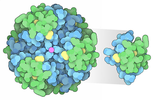

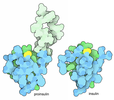
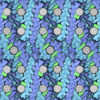









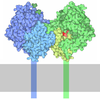
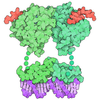
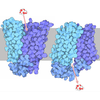
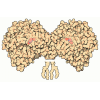


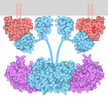

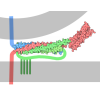
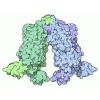
 Z (Sec.)
Z (Sec.) Y (Row.)
Y (Row.) X (Col.)
X (Col.)




































